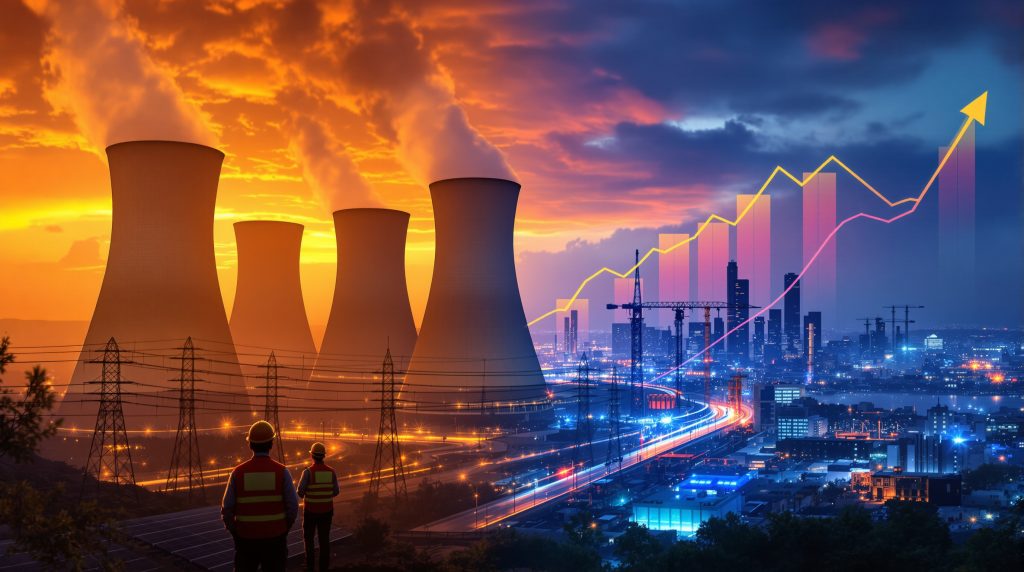The Growing Energy Challenge in India
India faces a significant challenge in meeting its rapidly growing electricity needs, particularly during evening hours when solar generation drops. This has led many Indian states to pursue new coal power deals despite national clean energy goals. The strategic expansion of coal power capacity reflects the complex balance between immediate energy security and long-term sustainability objectives.
As the world's third-largest greenhouse gas emitter, India's energy decisions carry global significance. The country currently maintains 210 GW of coal power capacity alongside 251.4 GW of non-fossil fuel capacity, highlighting its dual-track approach to energy development.
Why Is Coal Power Expanding Despite Renewable Goals?
India's electricity demand continues to surge, driven by economic growth, increasing air conditioning usage, and industrial expansion. While the country has ambitious renewable energy targets, several practical constraints are driving states toward Indian states coal power deals:
- Evening peak demand that coincides with reduced solar generation
- Insufficient battery storage deployment
- Grid stability concerns with variable renewable energy
- Delays in renewable project implementation
According to energy experts, the procurement rush for coal power is primarily fueled by projected increases in air conditioning demand during non-solar hours and the slow deployment of large-scale battery storage solutions.
Recent Coal Power Agreements by Indian States
Uttar Pradesh's Ambitious Coal Power Plans
As India's most populous state, Uttar Pradesh is taking significant steps to secure its energy future through coal power. The state is currently seeking contracts for at least 7 GW of coal-fired power to be delivered by 2030, according to recent bid documents.
Narendra Bhooshan, a senior official at the Uttar Pradesh Energy Department, explained the rationale: "Renewables alone cannot fill the base load gap." This perspective highlights the practical challenges in transitioning to a predominantly renewable grid without adequate storage solutions.
Assam's Pivot Away from Renewables
Eastern Assam state has recently withdrawn incentives for clean energy projects, signaling a shift in energy policy. The state is now looking to secure coal power agreements for delivery in 2030, joining Uttar Pradesh in expanding coal-fired generation capacity.
Bid documents reviewed by Reuters indicate that these contracts are expected to be finalized within the next two months, reflecting the urgency with which states are pursuing additional power capacity.
Other States Following Similar Paths
Several other Indian states have cited delays in renewable projects while opting for new Indian states coal power deals in 2025:
- Madhya Pradesh
- Tamil Nadu
- Bihar
These states have formally documented these concerns in regulatory filings, demonstrating a widespread trend toward coal power expansion across different regions of India.
India's Coal Power Capacity Expansion Timeline
Current and Projected Coal Power Capacity
India plans to increase its coal power capacity by 46% from current levels:
- Present capacity: 210 GW
- Target capacity by 2035: 307 GW
This expansion is occurring alongside renewable energy growth, with India targeting 500 GW of non-fossil fuel capacity by 2030, nearly double the current 251.4 GW.
Recent Coal Power Contract Activity
The past 16 months have seen remarkable growth in coal power agreements:
| Period | New Coal Power Capacity Under Contract | Significance |
|---|---|---|
| 16 months through July 2025 | Over 17 GW | Largest such pipeline since the COVID-19 pandemic |
According to India Ratings & Research, this surge in contracts represents a significant acceleration in coal power development compared to previous years, indicating renewed confidence in coal as a medium-term energy solution.
Major Companies Investing in Coal Power
Adani Power's Expansion Plans
In August 2025, Adani Power announced investments of approximately $5 billion in two coal-powered plants. This substantial commitment underscores the continued financial viability of coal power in India's energy market.
Torrent Power's Long-Term Coal Strategy
Torrent Power, which announced a $2.5 billion coal power project earlier in 2025, is evaluating plans to build 5-7 GW of additional capacity over the next decade. Jigish Mehta, whole-time director at Torrent Power, highlighted the challenges driving this decision: "State distribution companies are facing grid instability due to renewable variability and lack of scalable storage."
This statement reflects a broader concern among power providers about maintaining grid reliability while integrating larger shares of variable renewable energy. The trend towards decarbonisation in mining contrasts sharply with the expansion of coal power generation.
How Will This Affect India's Energy Transition?
Revised Projections for Coal's Peak
The recent surge in Indian states coal power deals has led energy analysts to revise their projections for when coal use will peak in India:
"We have revised our projection for coal-fired power generation in India, with the expected peak now occurring in the early 2040s, compared to the late 2030s in our previous outlook," noted Ashis Kumar Pradhan, senior analyst at Wood Mackenzie.
This projection shift represents a significant change in how experts view India's energy transition timeline, with implications for global climate goals.
Economic Considerations: Coal vs. Renewables with Storage
While coal expansion continues, economic factors may ultimately limit its growth. Alexander Hogveen Rutter, an India-based independent energy expert, points out: "New coal power is getting more expensive and the gap will only continue to grow as batteries scale up."
The cost comparison increasingly favors renewables with storage:
- Building renewables with storage capacity is becoming cheaper than new coal-fired capacity
- This economic advantage is expected to grow as battery technology advances and scales
As technology costs evolve, the financial case for coal will face increasing pressure from renewable alternatives, potentially capping long-term coal expansion regardless of current planning.
Battery Storage Development: The Missing Piece
Current Battery Storage Deployment
India's battery storage deployment remains in early stages:
- Total auctioned capacity: approximately 12.8 GWh
- Currently operational capacity: only 219 MWh
This significant gap between planned and operational storage, highlighted in an August report by the Institute for Energy Economics and Financial Analysis, helps explain why states continue to pursue Indian states coal power deals despite renewable goals.
The slow pace of battery deployment represents one of the most critical bottlenecks in India's energy transition, forcing states to make difficult choices between reliability and sustainability. India's efforts to establish a battery-grade lithium refinery could help address this challenge in the future.
Balancing Short-Term Needs with Long-Term Goals
The Daytime Solar Advantage
Despite the coal expansion, solar power is expected to maintain its advantage during daylight hours due to its lower cost. Energy analysts anticipate that solar will continue to be the preferred generation source during the day, with coal primarily serving evening and nighttime demand.
This natural division of labor between energy sources reflects the economic realities of each technology, with solar remaining highly competitive during its periods of generation. Meanwhile, India's lithium supply strategy continues to develop as part of its broader energy security planning.
Implications for India's Decarbonization Timeline
The current trend suggests India will remain dependent on coal for longer than previously anticipated, even as renewable capacity grows. This dual-track approach reflects the practical challenges of energy transition in a rapidly growing economy with increasing electricity demand.
For global climate objectives, the extended timeline for coal use in India presents challenges, but the continued investment in renewable capacity offers some balance to the overall emissions trajectory. Current mining industry trends indicate this complexity will persist in the coming years.
FAQ: India's Coal Power Expansion
Why are Indian states signing more coal power deals despite climate concerns?
Indian states are prioritizing energy security and grid stability, particularly for evening demand when solar generation is unavailable. The lack of sufficient battery storage and delays in renewable projects have led states to secure coal power to ensure reliable electricity supply.
How does India's coal expansion align with its climate commitments?
India is pursuing a parallel strategy of expanding both coal and renewable capacity. While coal expansion may delay peak emissions, the country continues to invest heavily in solar, wind, and other clean energy sources, targeting 500 GW of non-fossil fuel capacity by 2030.
What would accelerate India's transition away from coal?
Faster deployment of grid-scale battery storage, improved transmission infrastructure, and accelerated renewable project implementation would reduce the need for new coal capacity. As battery costs continue to fall and deployment scales up, the economic case for coal will weaken.
How are rising air conditioning loads affecting India's energy planning?
Increasing air conditioning usage, particularly during evening hours, is creating demand peaks that solar generation cannot meet without storage. This evening cooling demand is a key driver behind states' decisions to secure additional coal power capacity.
Are You Tracking the Next Major Mining Discovery Opportunity?
Don't miss crucial opportunities in the rapidly evolving energy and mining sectors. Discovery Alert's proprietary Discovery IQ model provides real-time notifications on significant ASX mineral discoveries, helping you identify actionable investment opportunities ahead of the market. Visit our discoveries page to see how historical finds have generated substantial returns for informed investors.




